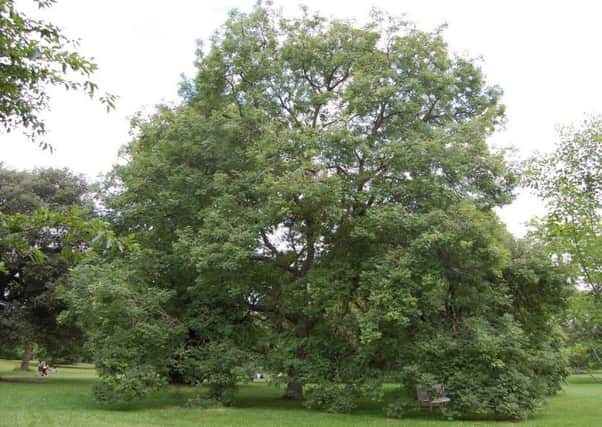Fabled ‘healing tree’ of the Yorkshire Dales suffering from fatal affliction - Roger Ratcliffe


Little wonder then that they so readily colonised the area now known as the Yorkshire Dales, where their legacy can still be seen on maps with names like “gill” for ravine, “foss” for waterfall, “thwaite” for clearing and “keld” for spring.
The ash is the iconic tree of the Dales landscape, and those Nordic farmers must have thought they had found a piece of paradise on earth.
Advertisement
Hide AdAdvertisement
Hide AdUntil Georgian times it was known as “the healing tree” and in a ritual which probably dated back to pre-Christian days a young ash was split wide open and sick children - especially those with weak limbs - were sent through the gap.
The tree was then bound back together with wattle and clay, and if the tree repaired itself the operation was judged to have been a success. If the gap reappeared, however, the child’s condition was thought to be incurable.
No one would suggest such a treatment for an illness today but, sadly, it is now the ash tree itself which is sick. And in many places across the Yorkshire Dales, the condition is fatal.
So it was with trepidation that I visited one of my favourite places in the entire national park recently. Grass Wood near Grassington is the biggest native ash woodland in the Yorkshire Dales, and it was reported late last summer that the disease known as ash dieback is seriously affecting Grass Wood. This is a woodland that is thought to have been there since the end of the last Ice Age.
Advertisement
Hide AdAdvertisement
Hide AdThe disease is caused by a fungus and blocks the affected tree’s water transport system, causing noticeable leaf loss and bark lesions leading ultimately to the tree’s death.
Originating in Asia, ash dieback fungal spores are probably spread by the wind, and in Europe, Polish trees were the first to be diagnosed with the condition back in 1992. It was not until 2012 that it arrived in Britain.
At the moment, a casual visitor to Grass Wood has few clues as to the unfolding story, but when I stopped to study the trees closely I found that some of them had scars at the base of their branches. These are tell-tale marks which indicate the presence of the disease.
Later in the spring, those that have succumbed will be more clearly evident by their reduced leaf cover.
Advertisement
Hide AdAdvertisement
Hide AdLast year, Geoff Garrett, the National Park’s senior trees and woodlands officer, described looking at Grass Wood from above Threshfield Quarry on the other side of Wharfedale. The bulk of the wood was ash but fringed with sycamore, he said.
“Imagine the ash all gone, then ask yourself what would be left?”
Many wildflowers growing on the woodland floor depend on healthy trees, according to Geoff, including water avens, St. John’s wort and celandine, dog’s mercury and herb paris - plants which take many years to spread.
“It is this mix which makes an ash wood so special,” the woodlands expert said.